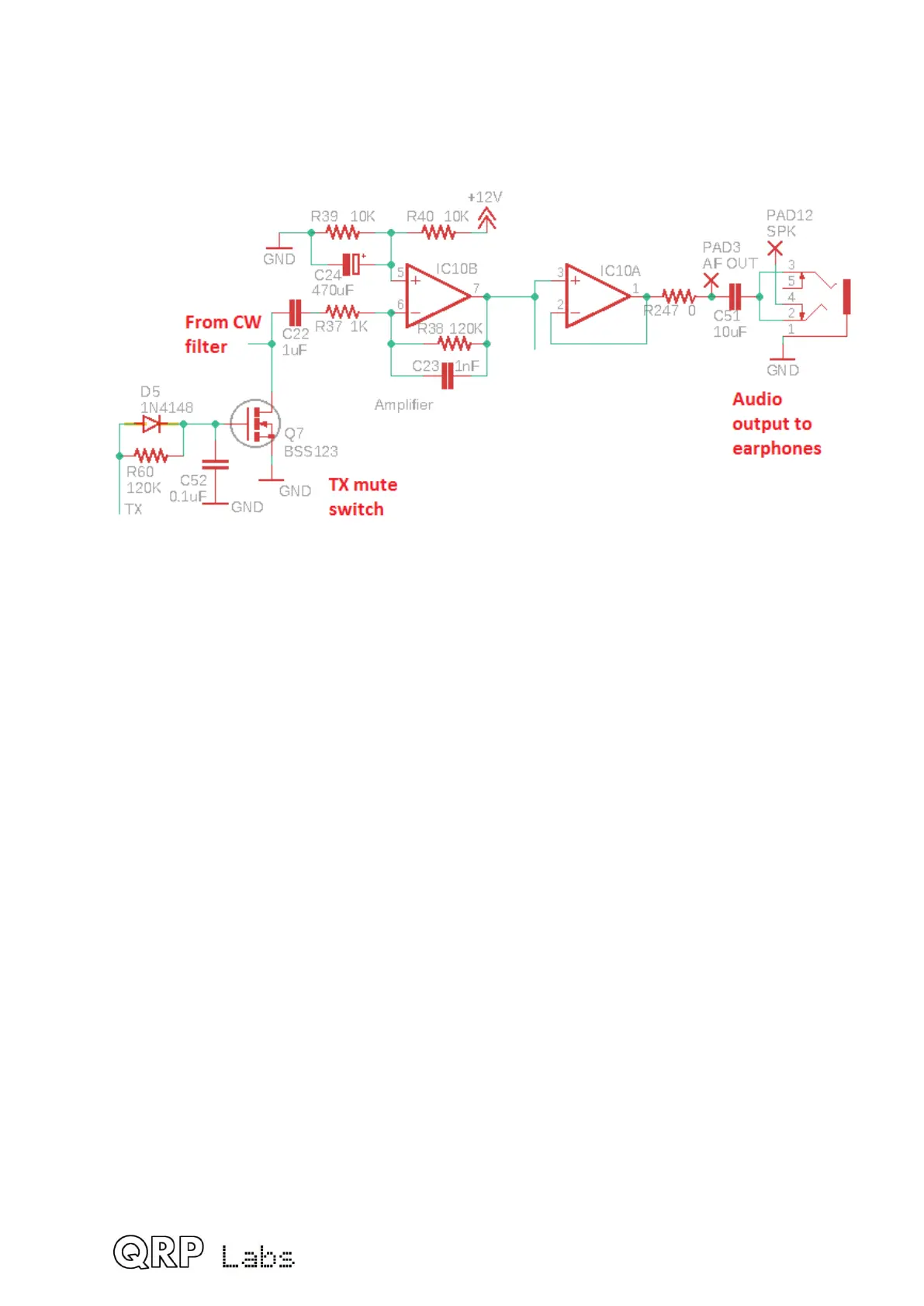homebrew designs over the past 40 years or so, so it is nothing new”. It uses a PNP
transistor (Q6) and R-C integrator circuit. Don W6JL uses this key-shaping circuit to drive a
600W Power Amplifier.
On key down the Q4 switch is “closed” by a high signal coming from the microcontroller. In
a really simple transmitter, Q4 could just be replaced by a straight Morse key to ground! But
in our case, the microcontroller implements automated stored message sending, beacon
modes, and Iambic keyer – so we need the microcontroller to be the boss of everything.
The microcontroller reads the state of the straight key or paddle, and processes it to
produce a key output. When in straight key mode the microcontroller transfers the signal
straight through from the key input, to the key output control line – but in other modes the
processor must generate the keying signal.
The component values set the rise and fall time. With the components shown, the rise and
fall time is about 5 milliseconds.
The following oscilloscope screenshots show a 40m band (7MHz) transmission, keyed with
a continuous series of CW dits at approximately 24 words per minute. The amplitude is
approximately 3.8W into a 50-ohm dummy load (with 12V power supply).
91
